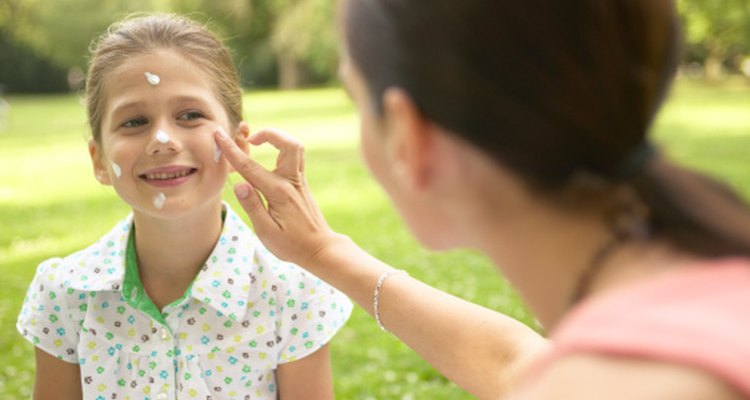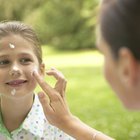
We’ve been advised against purchasing sunscreen that contains PABA from our local drugstore before heading out on a sunny vacation. PABA, or para-aminobenzoic acid, was one of the first sunblocks that became widely available for purchase, appearing on shelves in the 1970s. But now, PABA is rarely used as a sunscreen ingredient, and the reason is not as scary as you might assume.
PABA the Nutrient
PABA is a nutrient found in b-complex vitamins and in some multivitamin supplements. Grains, animal products, liver, kidney, molasses, mushrooms and spinach all contain PABA. The human body itself even manufactures some PABA, when folic acid is present in the intestines. There are side effects if people ingest more than approximately 300 mg/day, such as nausea, skin rashes and irritation, which is caused by acidity. PABA can also interfere with antibiotics, namely, sulfa drugs; therefore, avoid any supplemental PABA if you are on antibiotic medication.
The Pros of PABA
Health benefits have been associated with small doses of supplemental PABA, but research continues to test and verify these results:
• Reduction of skin lesions associated with dermatitis • Improved fertility • Mending of skin coloration associated with vitiligo discoloration • More efficient use of protein in the body
How PABA Ended Up in Sunscreen
The most common use of PABA is that of sunscreen, acting as a dye that absorbs ultraviolet B (UV-B) light, the rays that cause sunburn. PABA can’t protect you from the sun if only taken orally; it must be applied topically. PABA contains a benzene ring in which electrons can shuffle, or resonate, between different locations within the six-sided structure. Electrons can also bounce around in an adjacent carboxyl group, made up of carbon, two oxygens and a hydrogen (COOH). This electron dance matches that of the lightwaves of UV-B rays, absorbing and blocking UV-B energy by converting the light to heat.
The Cons of PABA
Researchers did not find that PABA wreaked havoc with our cells or poisoned our systems; instead, PABA mostly caused allergic reactions in a percentage of people who applied it to the skin. PABA also stains clothing. However, PABA is not found much in sunscreens any longer. PABA esters replaced PABA, which are less irritating.
Study Results of PABA
An FDA report published in 1989 stated that a PABA ester component decomposed to a known carcinogen, despite any real proof that PABA in sunscreen was associated with cancer. Regardless, PABA and PABA esters’ reputations were damaged. Some scientists do believe that PABA damages cell DNA, thus increasing the risk of skin cancer. Sunscreens containing chemical substances such as PABA are considered to be absorbing lotions, and some researchers in the health care industry recommend that consumers purchase reflecting sunscreens instead, ones that block both UV-A rays, which contribute to premature aging, and UV-B rays.
Related Articles

What Foods Provide Calcium D-Glucarate?

The Best Vitamins for Sinuses

What Are the Benefits of Extrapone ...

Polyphenols & the Skin

What Is Palmitoyl Oligopeptide?

What Vitamins Help the Liver?

Pros & Cons of Parabens

The Role of Collagen & Melanin in Skin

Zinc & Gray Hair

The Disadvantages of Deodorants

How to Reduce Acne Inflammation

Side Effects of Certain Dri

What Is Aloe Good For?

About Hair Bleaching

Health Benefits of Organic Foods Vs. ...

What Are the Ingredients in Proactiv?

How to Prevent Pock Holes From ...

The Negative Effects of Jealousy

Do Swimmers Have More Acne Breakouts?

Bullfrog Sunscreen Ingredients
References
Resources
Writer Bio
Krista Ulatowski is a LIVESTRONG.COM writer who has been writing for tech, health care and nonprofit companies since 2000 as a public relations consultant. She is attending classes toward a Master of Science in nutrition in the Seattle area. She has a Bachelor of Arts in journalism and English, and a certificate in business, from the University of Wisconsin-Madison.
Photo Credits
Jochen Sand/Photodisc/Getty Images